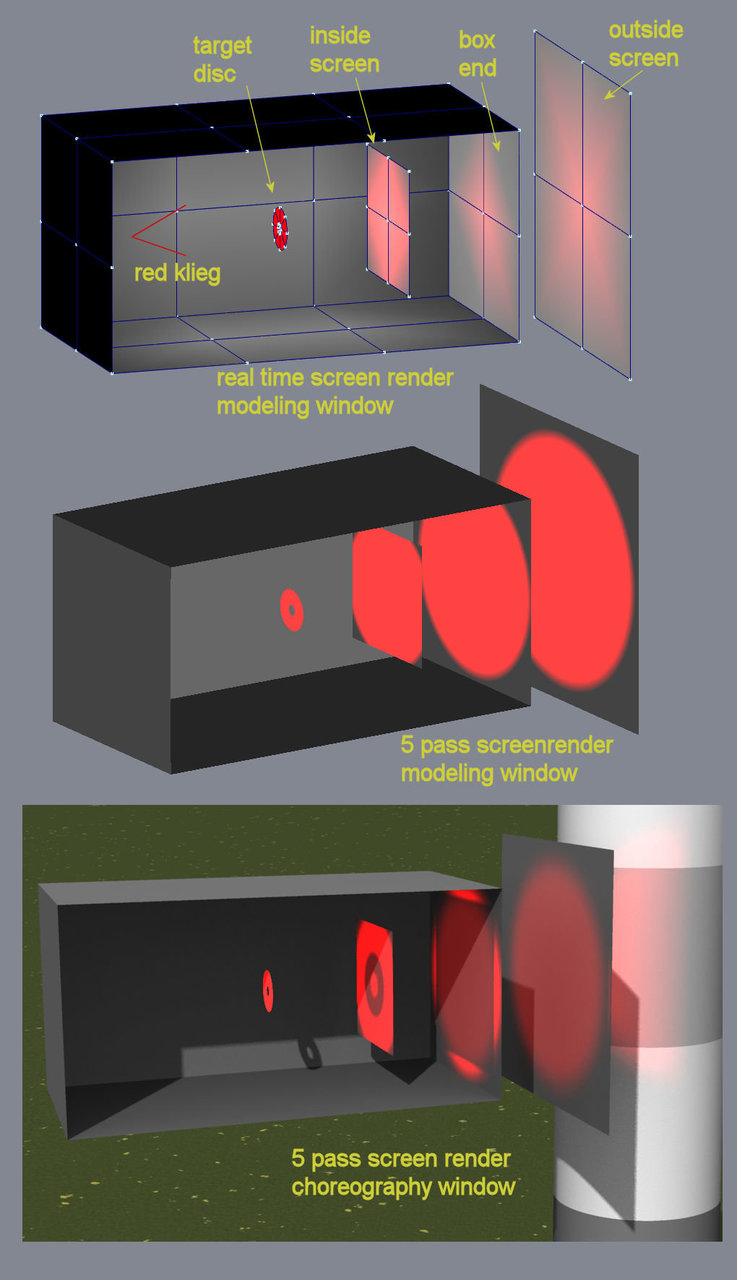Search the Community
Showing results for tags 'lighting'.
-
I'm building a railroad indicator lamp, essentially a red/green traffic light. I wanted to simulate the look of the optics of these lights which were designed by mounting an incandescent lamp at the focal length of a coloured glass fresnel lens (like in a lighthouse) such that its light is only visible when viewed almost on-axis as one would from a long distance. I think I've come up with a believable result using a hierarchical klieg light mounted inside the enclosure. It's aimed to shine inside the case and illuminate a small internal disc, standing-in for the lamp filament, sitting near the focal length of the lens. Viewing the indicator while it turns in front of you produces a result I'm satisfied with. semaphore_test.mp4 The problem is that, as far as I can tell, hierarchical lights (sun, bulb or klieg) do not handle well the shadows of other parts of the model. I set up a test model that's similar to my indicator lamp. Inside the open sided box is a klieg light aimed at a target disc that in this case has a hole in its centre. In any render from the modeling window there are no shadows generated by any surface regardless of whether the shadows are ray-traced or Z-buffered. Strangely a chor render does have translucent ray-traced shadows but the light still passes through the entire model and falls on an external model. My work around was to make an inside screen that was totally black so the light hitting the rear of the case is absorbed and only the target disc is illuminated. As for the light leaving the back of the enclosure, I'm fortunate that there will be about 4 ft. (1.2 m) between the rear of my indicator lamps and the nearest surface so I should be able to set a fall-off value that minimizes the spill. I suppose since hierarchical lights are typically used for things like automobile headlights this has never been an issue before. However you'd quickly notice this glitch if you were trying to shooting a night scene using the dome light of car as illumination. The passengers would have shadows while the other parts of the car would not. Obviously the ultimate work-around would be to add the lights in the chor but it would be nice to have this convenient feature work.
-
I'd love some advice, other than reading Jeremy Birn's book (which I have somewhere, lost in the move and separation... ugh), about how you would go about achieving lighting as in the attached sample. The character is well lit, seeing all features, and even the underside of his cheeks, while there's still a nice soft shadow being cast by the brim of his hat. I've been playing in a .cho all day tryint to get something similar. I built a psych w/ my character on it, and I probably had about 18 lights in there trying to achieve this effect and still wasn't even close. The sample came out of 3DS Max - it's by a tremendous 3D cartoon artist in Paris, Julien Tromeur. However, it'd be really great to be able to light characters like this in A:M. I don't mind putting the work in, but it'd be great for some guidance to get started. (Wish I still had that old Extras DVD - some of the sample scenes in there could probably help). Would I start w/ a light array? Suns? Does ambient occlusion contribute to this kind of look? Any tips you got would be greatly appreciated. Thanks, Tommy
-
I've run into a slight problem. I've added several Klieg lights in a model (as opposed to in the Choreography). However, I'm having trouble rendering them. Sometimes one will render, sometimes three will render and sometimes a different one will render. I can't get them all to render at the same time! Does anyone have any advice on what might be going wrong? Thanks, Dale











